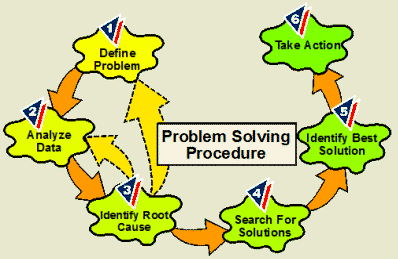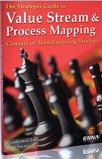|
 Reg
Revans
was careful not to define Action Learning in a rigid way. He left the concept open for growth,
experimentation and development. Others have attempted more definitive models. As a result,
Action Learning teams operate with a wide variety of formats on a wide range of problems.
However, most practitioners would agree on this summary of basic
elements. Reg
Revans
was careful not to define Action Learning in a rigid way. He left the concept open for growth,
experimentation and development. Others have attempted more definitive models. As a result,
Action Learning teams operate with a wide variety of formats on a wide range of problems.
However, most practitioners would agree on this summary of basic
elements.
Revans’ Learning Formula
Reg Revans described Action Learning with the formula L = P + Q, where Learning (L) occurs
through Programmed knowledge (P) and
insightful Questioning (Q).
Traditional instruction, or “programmed knowledge” is appropriate when we are faced with
puzzles, i.e., challenges that have a right answer. However, when we are faced with “problems”,
challenges that have no right answer, we need critical reflection or questioning insight. Action
learning encourages such reflection by providing the support to enable people to learn from
challenges as well as from themselves and the group itself.
There are substantial benefits of learning on all these multiple levels.
-
The knowledge is more likely to be transferable to other situations.
-
Participants engage in double loop learning. They not
only learn new facts but also investigate their own underlying assumptions and mental
models. They learn how to learn.
Learning Teams (Sets)
Action Learning is always a team effort. Revans referred to these teams as “sets.” Team
concepts had not been developed when Revans did his original work. The problem often lies
outside the expertise and knowledge of some or all of the team members. This is an important
part of the learning experience. A team consisting only of
experts in the area of the problem would be unlikely to question basic assumptions and
mental models.
Real Problems
The team is given a real problem and they are expected to
solve it. Contrived classroom exercises are not compatible with Action Learning. The problem
should also be a challenging problem, e.g. one of those
recurring, intractable problems that seem to haunt organizations, a problem where many people
think they know the answer but all their answers are different.
|
Learning Dominates
The problems and situations undertaken by an Action Learning team are
genuine, important and
difficult. However, the learning experience should be the primary goal. Solving the problem
is a happy but collateral result. This is primarily what distinguishes Action Learning
from the typical Kaizen Event or task force.
Problem Solving Procedure
The team needs a formal problem solving procedure, another
adaptation from the early Work Simplification movement, figure 3. The formal procedures prevent
a rush to judgment or knee-jerk responses. They structure the process and focus attention
towards the immediate task. A number of such procedures are popular as part of TQM and Six
Sigma. In essence, they are similar and most provide an adequate framework.

Figure 3 Problem solving Procedure

|





